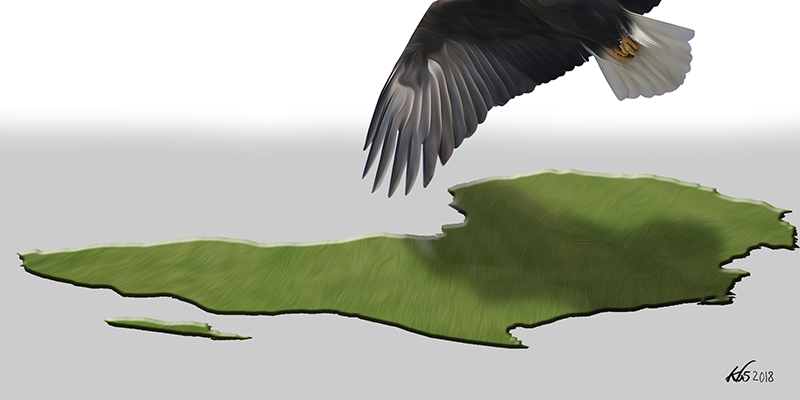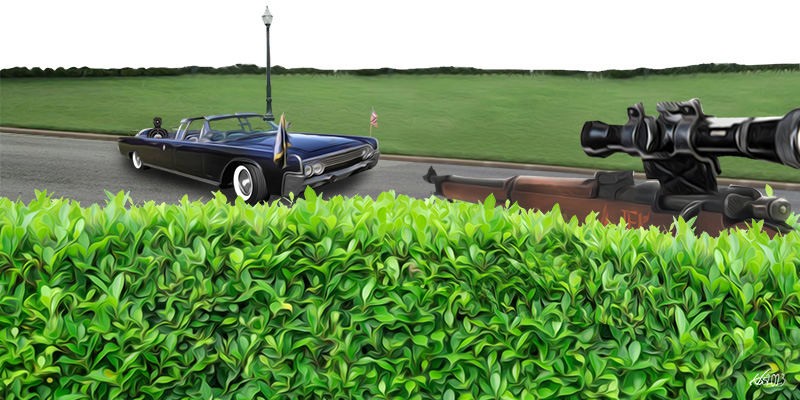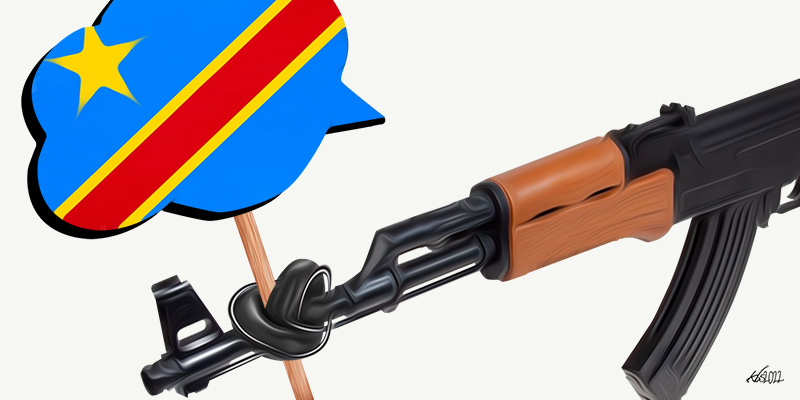Ten years after the 2008 election campaign, the “Birthers” have won for now in the United States, but Barack Obama remains a positive symbol with time for another act. The former US president stopped in Kenya on his way to South Africa, his third visit to his father’s birthplace since arriving on the national political scene in 2004 as an Illinois state legislator through a speech at the Democratic Convention that nominated John Kerry to challenge the re-election of George W. Bush.
It is now ten years since I returned to the United States with my family from our year-long East Africa democracy assistance sojourn in Nairobi in the wake of the failed 2007 election, the post-election violence, and February 28 “peace deal”. The day we flew out of Jomo Kenyatta International Airport for Amsterdam en route to Atlanta on the way home to Mississippi, I was first exposed to the “birther” conspiracy theory through a front-page story in the Daily Nation.
Many may not remember fully now but recognise that, in its inception, the “birther” conspiracy theory was not just the idea that then Senator Obama was born in Kenya, and secretly smuggled into the US as an infant, and was thus not technically eligible to be elected President of the United States; it also fit into the context of the claims that Obama was involved, as a US Senator from Illinois in 2007, in a conspiracy with Raila Odinga to steal Kenya’s election on behalf of Muslims. These bizarre claims embellished from there into a narrative that rather than being a loyal American, Obama was essentially on the side of al-Qaeda and the global jihadists to establish a Sharia-enforcing caliphate and that Obama was, in essence, on the other side of the war being fought by Americans in the “surge” led by Bush and General Petraeus in Iraq to defend the fundamental underlying values of our democratic republic and Western democracy in general.
Many may not remember fully now but recognise that, in its inception, the “birther” conspiracy theory was not just the idea the that then Senator Obama was born in Kenya, and secretly smuggled into the US as an infant, and was thus not technically eligible to be elected President of the United States; it also fit into the context of the claims that Obama was involved, as a US Senator from Illinois in 2007, in a conspiracy with Raila Odinga to steal Kenya’s election on behalf of Muslims.
The conspiracy theories about the 2007 Kenyan election faded somewhat over time, partly because of the peace deal that put Odinga in Mwai Kibaki’s government as Prime Minister, where he continued to be friendly to the West, and partly because it became clearer that the election was stolen by Kibaki’s side, which controlled the Electoral Commission of Kenya (and not by the opposition which didn’t). Reports at the time from the American right at the Heritage Foundation think tank and National Review magazine, noting the theft of the election, helped American conservatives who cared about facts avoid getting sucked into nonsense about a Luo jihad involving “tribesman” Obama and “cousin” Raila.
While there remain a few holdouts who claim that “we can’t know” who won Kenya’s 2007 election, they seem to be pretty well limited to personally interested parties at this point, with the release of the State Department cables showing that US ambassador Michael Ranneberger himself saw tallies being changed at the ECK and claimed to have encouraged the late ECK Chairman, Samuel Kivuitu, to withstand the pressure to declare Kibaki the winner anyway, even though Ranneberger knew that the chairman had no way of controlling the Commission, which was thoroughly stacked by Kibaki in the weeks and months before the election.
Once it is recognised that the vote tallies were actually changed at the ECK, Americans (most especially rock-ribbed traditional stalwarts attracted to “the Tea Party” and/or Donald Trump’s “neopatriotism”) will understand that Kenyans had a duty, not just a right, to protest the 2007 election. Americans would not trust biometric voter registration (or tolerate secret voter lists) but most certainly, the traditional American narrative would demand that we march on our country’s court houses if our votes were simply changed by our election officials. Ranneberger’s pre-election cables to Washington made clear that as of that time, the Kenyan courts were not independent and would provide no recourse so that voters would be forced to go to the streets if there was fraud that became known.
Once you legitimise protesting the actions of the ECK, and recognise that the largest category of deaths (35%) during the post-election violence, as per the Waki Commission, were the result of violence inflicted by Kibaki’s security forces, and that a large number that were identifiable by tribe were Luo, then the whole notion of some extraneous evil conspiracy somehow involving Obama and the global jihad as the reason for the post-election violence becomes that much more irrational.
According to the Waki Commission’s report, the largest number of casualties (744) were in the Rift Valley. A portion of violence that then Assistant Secretary of State, Jendayi Frazer, insisted on calling “ethnic cleansing” in a January 2008 visit (a label not adopted in Washington) was conducted by Kalenjin militia in the pattern employed by KANU in 1992 and 1997. KANU was a religiously diverse secular party that sought to maintain single-party hegemony through compliant cadres among all major tribes and religious groupings in accordance with its political needs. No suggestion that Moi, who personally identified as a Protestant Christian, was a secret Muslim jihadi, even though the victims may have been mostly Christians.
The International Republican Institute/University of California, San Diego exit poll funded by USAID (the one showing an Odinga presidential win by roughly six points that was embargoed for six months) gave more evidence in the details that the 2007 election contest was driven, as is normal in Kenya, by tribal rather than religious alignment, with Odinga shown as winning a majority of self-identified Christians and of Muslims (although the margin was greater among Muslims). On the other hand, there was a “gender gap” with women favouring Kibaki and men Odinga.
It may also seem hard to remember now but by January 2009, Obama was sworn in to a wave of good feeling with high approval numbers. He had campaigned as a pragmatic moderate Democrat who was against dumb wars and only for smart ones; a Christian who grew up with limited religion and who was popular with the irreligious left and the Christian left and who made some real inroads courting what we call “Evangelicals” who were not part of the more politicised, harder, “Religious Right”.
It may also seem hard to remember now but by January 2009, Obama was sworn in to a wave of good feeling with high approval numbers. He had campaigned as a pragmatic moderate Democrat who was against dumb wars and only for smart ones
The inaugural celebrations seemed to suggest some real healing from the cultural rifts of “the Sixties” and “Vietnam” that featured so prominently in presidential campaigns throughout my lifetime, as well as a milestone to show that we had come so far in overcoming racial prejudice in the post-Civil Rights era that black/white racial issues were no longer a part of those cultural rifts. Maybe we had more in common than our political leaders had been telling us since the rise of Fox News and the Bill Clinton impeachment saga; maybe this president could be a “uniter not a divider”. In part the failure of his predecessors was because the Bush political operation ended up pulling a “bait-and-switch” by mobilising gullible church networks to support the invasion of Iraq for regime change using a claimed causus belli of active chemical/biological and nuclear weapons programmes, then firing up the culture wars further to drive turnout to get re-elected over John Kerry. This was a bad error of moral judgment that has continued to reverberate through American politics.
Kerry was certainly a Yankee patrician from “central casting” — as Kenyans well know from the 2017 election — but he was unquestionably accurate in pointing out in debate with Bush that we had gotten “stuck in Iraq”. Of course, Kerry was too polite, patrician and/or patriotic to go for the jugular and trash Bush for Iraq the way Donald Trump did in his 2016 campaign.
For saying that we were “stuck in Iraq”, Kerry got pilloried as “unpatriotic” aside from the “Swift Boat” sliming he got over his military service in Vietnam – conveniently not a problem for Clinton, Bush, Cheney or Trump, who all managed in various ways not to get sent, unlike Kerry who actually volunteered to go to Vietnam. Nonetheless, the unhealed cultural wounds were such that almost 30 years after the fall of Saigon, Vietnam was still a winner for Bush over Kerry, in spite of Iraq.
Part of the reason that Obama took office with a wave of good feeling and better numbers than he had during the election was that John McCain declined to play along with the trashing of Obama in darker ways and treated him as a legitimate political adversary. It was good for the country and gave Obama a fair start in office.
“Birtherism,” though, in spite of McCain’s choice, became an enduring American movement that has had a profound effect on our politics and transformed the Republican Party with which I had been involved for much of my life. Ultimately, the Birther Movement became a tool for Donald Trump as an outsider to gain “free media” attention and admiration from those who were otherwise profoundly afraid of or opposed to the Obama presidency.
People like John McCain and George W. Bush or his family members in politics, whatever their faults and mistakes on policy choices (even the really big one, invading Iraq, which McCain acknowledges in his latest book, The Restless Wave) were too experienced, too educated, and too well advised to believe the craziness about Obama being secretly smuggled into the US as a Kenyan child (although the McCain campaign did check it out to make sure as did the McClatchy newspaper chain) and were morally constrained, in my judgment at least, from deliberately lying about it to hurt Obama. If you cannot buy that it was morals, at least we can agree that they were restrained by a judgment that it was better politics to stay out of that gutter. Hillary Clinton also stayed away (even if one credits the report that her adviser Sidney Blumenthal triggered the McClatchy review to make sure there was nothing to it).
Donald Trump was not similarly constrained and his hectoring of Obama put him in the front row of politics in America. He shared headlines with Obama even as Osama bin-Laden was being killed by Navy Seals under Obama’s command. Not one to accept defeat in an argument by being proven factually wrong, in this case by the release of Obama’s long form Hawaii birth certificate, Trump bided his time and cranked the Movement back up for his presidential campaign in 2015 and 2016, discarding it once he had seized the agenda and the Republican Party since the specific “birther” claim was no longer useful to him.
It has been a bit surreal for me to see this happen. Educated middle-class Americans of my generation (Obama’s, essentially) have a lot to answer for in our complacency. Our democratic republic requires more attention and effort than we have delivered in recent years – whatever our party or policy preferences.
Not one to accept defeat in an argument by being proven factually wrong, in this case by the release of Obama’s long form Hawaii birth certificate, Trump bided his time and cranked the Movement back up for his presidential campaign in 2015 and 2016, discarding it once he had seized the agenda and the Republican Party since the specific “birther” claim was no longer useful to him.
Fortunately, just as Obama himself has, we hope, time for other acts in his public life as an American after elective politics, the Trump presidency too shall pass and the Birther Movement will be a strange chapter in political history books. It will leave scars and I expect that Trump will be willing to use other lies for domestic advantage that will manipulate gullible people and torque emotions on difficult and divisive social matters. But in the longer term, I think we will rise to the occasion and get to a better range of equilibrium. We have significant long- term challenges on poverty, education, healthcare, economic mobility, and government debt that have been building up during our protracted wartime, but I think Americans are getting more engaged and are rolling up their sleeves to work on solutions.
Trump as an individual is something of a fluke. Most of the people who voted for him have little in common with him really. I know this because they are my peers, my extended family and friends to a great extent. He lost the national popular vote in a low turnout election. Trump won in large part because neither Obama nor the Clintons succeeded in building a Democratic Party that was seriously competitive in much of the country.
The big difference as of now is that Trump as president in our system still has far less power than the president in any of the East African countries. He will leave office by the end of his lawful first term or his second, if re-elected.
On balance, I think that we will see American policy in its relations with Kenya in the Trump years to continue to be largely a continuation of that under Obama, as reflected in the American approach to supporting both the 2013 election with John Kerry as Secretary of State and 2017 with Kerry as chief election observer and Rex Tillerson as Secretary of State, with Bob Godec as “our man in Kenya” throughout – just as Obama’s relationship with Kenya in its policy aspects was primarily a continuation of the approach under George W. Bush.
There have been a few major inflection points in the American/Kenyan relationship in the last twenty years, but most have not been specific to whoever was president in either Washington or Nairobi.
On balance, I think that we will see American policy in its relations with Kenya in the Trump years to continue to be largely a continuation of that under Obama, as reflected in the American approach to supporting both the 2013 election with John Kerry as Secretary of State and 2017 with Kerry as chief election observer and Rex Tillerson as Secretary of State, with Bob Godec as “our man in Kenya”
The first, of course, was the al-Qaeda Embassy bombings in Kenya and Tanzania in 1998, kicking off the ongoing conflict between the US and Kenya, on the one side, and various Islamist “violent extremists”, on the other. As reflected in the Mombasa rocket attack, the USS Cole bombing, the bombing in Kampala, the various attacks in Kenya, most notoriously the Westgate Mall and Garissa University killings, terrorist incidents have been a regional “fact of life” ever since.
For most Kenyans, terrorism is not quite so central a concern as it is to Americans, but it has still inevitably shaped both sides of the relationship over the last two decades. And in this context, after 9/11 and our ensuing land wars in South Asia, with the establishment of the Combined Joint Task Force-Horn of Africa base in Djibouti, Kenya resumed its regional security role along the lines established in the 1970s and ‘80s when the United States was fighting the Cold War and Kenyatta and Moi wanted protection from Idi Amin and Siad Barre, as well as the kind of relationship that would be useful to them in avoiding disruption to their domestic rule.
The next inflection point, albeit of lesser magnitude from an American standpoint, was the retirement of Moi and the transition to NARC and Kibaki.
Next was the demise of NARC and the failure of constitutional reform with the 2005 referendum. Related this was the Anglo Leasing scandal that showed that security and counterterrorism were for sale at high levels, along with the baseline of corruption in the police and security services that let terrorists move about and in and out of the country. The Artur Brothers and the Standard flamboyantly highlighted the rot.
Next, and finally, was the start of the war in Somalia to save and reinstate the Transitional Federal Government and oust the Islamic Courts Union in December 2006. Since that time the United States Government has continued to have and support all our other existing priorities in Kenya, such as lifesaving humanitarian health support through PEPFAR and other lower profile programmes, food assistance and small farm agricultural support, along with supporting all sorts of philanthropic-type programmes and the somewhat more controversial “big development” initiatives like Power Africa, frequently in cooperation with other donors.
In recent years we also started devoting more governmental focus to promoting international private financial investment, such as the 2015 U.S. Overseas Private Investment Corporation investment in the Dubai-based Abraaj Growth Markets Health Fund, L.P., that has been active in the Nairobi private healthcare market prior to recently entering liquidation under circumstances being investigated.
Nonetheless, in the meantime we have been at war in a country with a huge border with Kenya – a country during much of these last eleven-and-a-half years that has been too dangerous to support with a full diplomatic and aid presence and which has thus had those parts of the effort supported from Kenya. And from reading the newspapers back in the day and a few books, it is apparent that Kenya provided some military support for the invasion by the Ethiopian military at the time to contain the potential spread of terrorism.
In 2011, during Kibaki’s second term, with the support of Prime Minister Odinga, Kenya entered the war directly and formally in its own right. Roughly nine months later, the Kenya Defense Forces were admitted into the AMISOM peacekeeping collaboration, allowing for financial reimbursement through Western donors, and eventually driving al-Shabaab, now formally asserting affiliation with al Queda, out of their previous position of direct control of the port at Kismaayo (not to say that al Shabaab did not continue to apparently benefit from the illicit charcoal and sugar trade through the port).
Nonetheless, in the meantime we have been at war in a country with a huge border with Kenya – a country during much of these last eleven-and-a-half years that has been too dangerous to support with a full diplomatic and aid presence and which has thus had those parts of the effort supported from Kenya.
In June 2006, a few months before the Ethiopians were invited to install the Transitional Federal Government in Mogadishu, Ambassador Bellamy finished his service in Nairobi and Ambassador Ranneberger was appointed by President Bush from the Foreign Service. Within a few months of the start of the war, Ranneberger sent a cable to Washington explaining that his approach for “achieving U.S. objectives in Kenya’s elections” was to stay quiet on the debates on constitutional reform and election reform and “build capital” with the incumbent. With the perturbation of the 2008 crisis and the intervention for constitutional reform up through 2010, this has remained the baseline beat of our relationship over the years.
Will the recent moves by Kenya’s dominant new Jubilee Party to align with Communist Party of China structures and philosophy to accompany its huge borrowings from the Chinese state cause any serious rethink in Washington? I have no idea, but it certainly does not seem to have captured any particular place in the priorities of either the retired President Obama or current President Trump.








